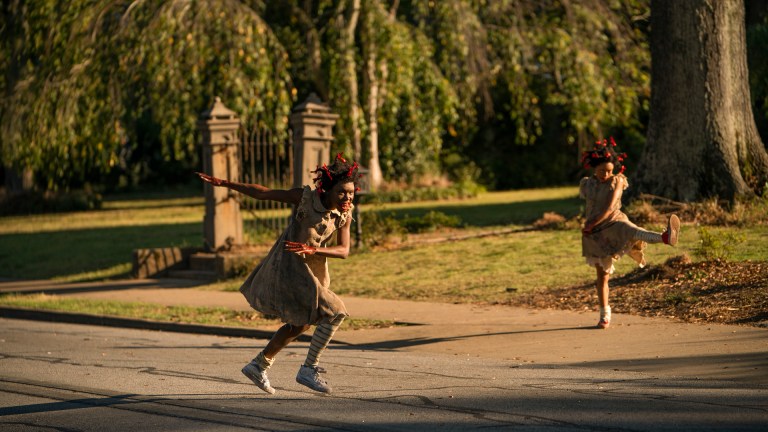How Lovecraft Country Uses Topsy and Bopsy to Address Racist Caricatures
Diana is haunted by Uncle Tom’s Cabin in Lovecraft Country episode 8, providing the show a route to discuss racism and bigotry in a new way.

The following contains spoilers for Lovecraft Country episode 8.
Lovecraft Country puts racism at the forefront of its storytelling. Anti-Blackness is as much a character as Leti and Tic. It manifests in many ways on the show, through the protagonists’ engagement with white characters and the systems they control. And through characters like Ruby, whose internalized racism sometimes puts them odds with their own. Anti-Blackness takes on a specific visual language in episode 8, “Jig-A-Bobo”, when Diana is chased by malevolent “pickaninnies”.
Diana runs away from the line to view the body of her deceased best friend, Emmet “Bobo” Till, which no one notices. She is left alone and unprotected by all of the adults in her life and is cursed by Captain Lancaster as a result. She’s beset upon by specters only she can see, they pursue her incessantly, and she can’t tell anyone about them. The ghouls takes the form of Topsy (and Bopsy, as there are two), the original “pickaninny” caricature, who was first introduced in the anti-slavery novel Uncle Tom’s Cabin.
Written by white female abolitionist Harriet Beecher Stowe and published in 1852, Uncle Tom’s Cabin tells the story of Uncle Tom, a noble and dignified Christian slave. On a riverboat to New Orleans to be sold by auction, Tom rescues angelic little white girl, Little Eva, when she falls overboard. Grateful, her father Augustine St. Clare purchases Tom, and he and Eva become great friends. On Eva’s deathbed, she asks her father to free all his slaves, which he plans to do, but dies in a freak accident before he can. Tom is sold to brutal Sam Legree, and is eventually whipped to death after refusing to divulge the whereabouts of two female runaways. Uncle Tom’s Cabin sought to garner sympathy for slaves and support for abolition, by expressing the depravity of slavery, which it did successfully.
Topsy is only a minor character, but her cultural impact is clear. She is described in the book as “eight or nine years old, and, besides being very black, had round shining eyes, glittering as glass beads, and wooly hair braided into little tails, which stuck out in every direction.” She was dressed in rags, and spoke in broken English, and is described as an “imp of darkness.” Ironically, her mischievousness, and the fact that she’s a thief was meant to reflect intellectual capability. However the Topsy caricature was subsequently made popular through minstrel shows and films, which depicted her as humorous instead of sympathetic. That pervasive negative image of Black kids as simple and unkempt still persists, from the serialized and bastardized Sambo, to the Little Rascal Buckwheat.
In the show, Topsy (Kaelynn Harris) and Bopsy (Bianca Brewton) take the picaninny image to its frightening extreme. Their wide mouths—big enough to eat watermelon and fried chicken—are carved into sinister smiles that expose jagged teeth. Their rhythmic movement is punctuated and animalistic. Their eyes glow. When they get close to Dee, their nails grow to talons. They embody so many horror tropes, and make for some of the most straightforward horror antagonists in the series. They are made more frightening because they so accurately reflect the racist imagination they are a product of.
Topsy and Bopsy are what all Black children look like to racist white folks, something wicked and less than human. It is possible Lancaster chose this specific imagery to project his vision of Diana onto her. But it is more likely that Diana, in response to the trauma of losing her best friend to racial violence, manifested her fear of what she looks like to the outside world as an angry, tired, traumatized, Black girl.
It is, after all, the contorted features of illustrated Topsy on the cover of Uncle Tom’s Cabin having smashed Little Eva’s head against a mirror, that first alerts Diana to the ominous presence. Diana is literally running away from all of the worst stereotypes about Black girls, and has to constantly avoid being touched by them. Lovecraft Country continues to make racial horror literal by giving form to the unspoken fears Black folks carry.